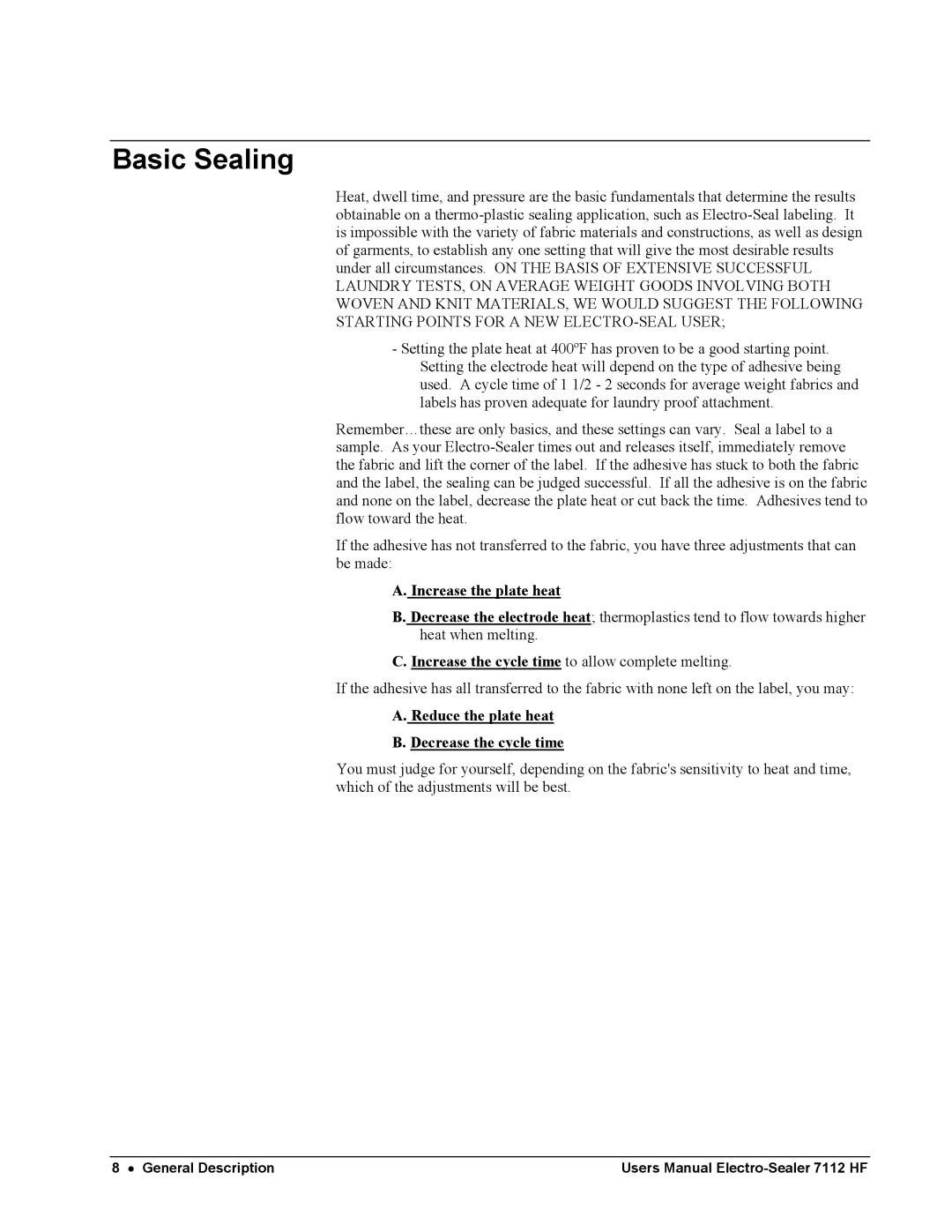
Basic Sealing
Heat, dwell time, and pressure are the basic fundamentals that determine the results obtainable on a
-Setting the plate heat at 400ºF has proven to be a good starting point. Setting the electrode heat will depend on the type of adhesive being used. A cycle time of 1 1/2 - 2 seconds for average weight fabrics and labels has proven adequate for laundry proof attachment.
Remember…these are only basics, and these settings can vary. Seal a label to a sample. As your
If the adhesive has not transferred to the fabric, you have three adjustments that can be made:
A. Increase the plate heat
B. Decrease the electrode heat; thermoplastics tend to flow towards higher heat when melting.
C. Increase the cycle time to allow complete melting.
If the adhesive has all transferred to the fabric with none left on the label, you may:
A. Reduce the plate heat
B. Decrease the cycle time
You must judge for yourself, depending on the fabric's sensitivity to heat and time, which of the adjustments will be best.
8 • General Description | Users Manual |
